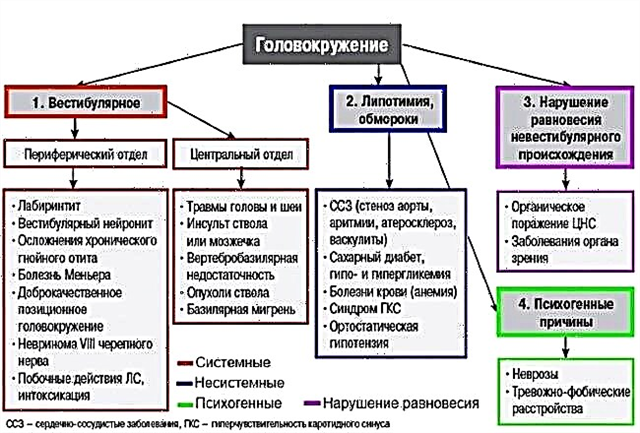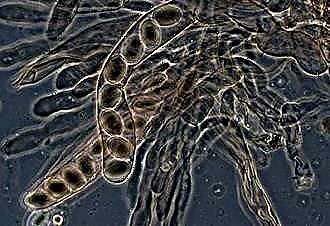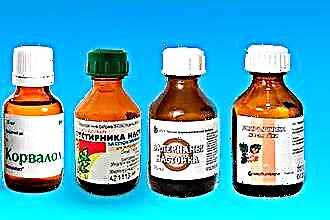A person with maxillary sinusitis experiences many unpleasant sensations: pain in the cheekbones, ears, teeth and head, nasal congestion, weakness and chills from fever, difficulty in nasal breathing, persistent runny nose. Therefore, when he has a nosebleed with sinusitis, he often begins to panic. However, often the presence of blood in the mucus does not pose a serious threat to the body.
Causes of nasal bleeding
 Blood with sinusitis is most often caused by pathological changes in the tissues of the nasal cavity and paranasal sinuses. A dense network of various vessels is located in the nose. The mucous membrane in the process of inflammatory processes undergoes atrophic changes, causing an increased flow of blood in them. However, you need to be very careful and distinguish between snot with blood and extensive nasal bleeding. These phenomena can be of different nature.
Blood with sinusitis is most often caused by pathological changes in the tissues of the nasal cavity and paranasal sinuses. A dense network of various vessels is located in the nose. The mucous membrane in the process of inflammatory processes undergoes atrophic changes, causing an increased flow of blood in them. However, you need to be very careful and distinguish between snot with blood and extensive nasal bleeding. These phenomena can be of different nature.
In general, all nosebleeds are divided into two types:
- Traumatic, mainly local in nature. They occur as a result of injuries, blows, wounds, operations or banal small mechanical damage to the walls of the mucous membrane. They can be disposable (until healing) or long-term, life-threatening.
- Symptomatic, can be general and local. They are a sign of some kind of disease (hypertension, nephrosclerosis, hemophilia, hemorrhagic vasculitis, etc.). Inflammation and swelling in the accessory chambers and the nasal cavity also belong to this section.
Additional factors also play a role: hypovitaminosis (in particular, lack of vitamin C), overheating of the body, high physical activity, and changes in atmospheric pressure.
As for the reasons why blood appears with sinusitis, the most common are the following:
- Mechanical damage to the walls of blood vessels in the area located behind the vestibule of the nose, most often due to picking fingers and removing dried crusts.
- Dry mucous membrane from exposure to secretions and dry indoor air.
- Too intense blowing of the nose without first instilling vasoconstrictor agents with a strongly stuffy nose causes an increase in edema, overstrain and rupture of blood vessels in the tissues.
- The habit of drawing in mucus in order to then cough it up through the mouth damages the capillaries of the affected mucosa.
- Long-term use of vasoconstrictor drugs, which causes capillary fragility.
- Weakened, fragile vessels in the nasal cavity and maxillary sinuses, often due to viral infections.
- Previous trauma to the bridge of the nose (especially a fracture), due to which bleeding can occur even with light exertion.

With sinusitis, the mucous membrane is weakened by a constant rush of blood in the tissue. If the vessel bursts, then blood gets into the exudate. In this case, the effect of mucus and pus does not allow the damaged vessel to completely tighten, therefore a weak spot is formed. With each strong blowing of the nose, the capillary wall breaks again, and snot with blood flows from the nose.
In the case when the cause of the appearance of blood is unclear, and the bleeding is severe and does not stop with the usual first aid measures, it is necessary to urgently call an ambulance. Perhaps sinusitis has nothing to do with it, and the bleeding is caused by another, much more serious reason.
How to treat bloody snot in adults
Often, with sinusitis with blood, the patient sees the following picture: during the day, no negative manifestations are observed, and in the morning, at the first blowing out, red clots or streaks are observed in secret. The fact is that during sleep, the capillaries in the mucous membrane dry out, so the first load on the tissues of the inner part of the nose when blowing your nose leads to their damage.
Abundant bleeding should alert a person, since they may be the result of a violation of the flow walls under the influence of the inflammatory process in the upper respiratory tract. It is best to go to a hospital and get tested, including fluoroscopy and a blood clotting test.
To avoid these troubles, you should properly clean your nose.
 For the best and safest removal of mucus from the nasal passages and accessory chambers, you need to adhere to certain rules when blowing your nose. This procedure must be carried out in several stages:
For the best and safest removal of mucus from the nasal passages and accessory chambers, you need to adhere to certain rules when blowing your nose. This procedure must be carried out in several stages:
- Sequentially pour a few drops of 0.9% isotonic saline solution into each nostril. It can be simply prepared at home by simply dissolving half a teaspoon of ordinary table salt or sea salt purchased at the pharmacy in a glass of warm water. It costs a penny, but brings a lot of benefits. It is important not to make the solution too saturated so as not to burn the epithelial cells.
- After a couple of minutes, gently clear the nostrils from the crusts, blow your nose thoroughly, pinching each nostril in turn.
- The necessary medicine is injected into the nasal passages. In this case, the head must be kept straight in order to achieve maximum irrigation of all surfaces.
- When using drops, lie down, turn your head to the side and drip the drug, then turn on the other side and repeat the manipulation with the second nostril. After 10 minutes, clear your nose again, blow your nose and rinse with saline.
If the swelling is very strong, then a few minutes before blowing your nose, you should definitely drip the nose with vasoconstrictor drugs.
Features of sinusitis with signs of blood in children
Nasal discharge in children is a familiar phenomenon, with which parents try to fight as best they can, however, without much worry. The appearance of traces of blood in the mucus often leads to panic. It should be noted that the walls of blood vessels in children are very thin, therefore, they are capable of bursting even with a small load. The presence of red dots and thin veins in the snot is not dangerous.
Capillaries in children with sinusitis and runny nose can be damaged for the following reasons:
- Drying out of the mucous membrane from dry air in the apartment.
- Lack of vitamin C in the body.
- Poking your nose with your fingers. Cleaning the cavity with cotton swabs, nozzles (aspirators) can damage the thin walls.
- A viral infection that damages the mucous membranes.
- Increased intracranial pressure. This is a rather serious signal, it is better to see a doctor.
- Taking drugs that can cause vasospasm, such as no-shpy.
 To prevent drying out of the mucous membrane and weakening of the vascular walls, the child's nasal passages must be moistened. This can be achieved in several very simple, complementary ways:
To prevent drying out of the mucous membrane and weakening of the vascular walls, the child's nasal passages must be moistened. This can be achieved in several very simple, complementary ways:
- Purchase a household humidifier. Online stores offer a wide selection of these devices at a price of several hundred rubles and more, depending on the area to be treated. It evaporates water using ultrasound and takes up very little space. If this is not possible, then it is enough to hang wet sheets in the room.
- Regularly ventilate the room where the sick child is, wipe dust and do wet cleaning.
- Apply steam inhalation. It takes 10 minutes to breathe through your nose over a saucepan with plain hot water to remove excess secretions and prevent epithelial cells from drying out.
- Rinse the nose with saline solutions or decoctions of herbs with wound healing (chamomile, plantain, calendula) and vaso-strengthening (nettle juice, rose hips, broad-leaved burdock) effect.
- Lubricate the child's nasal passages with tea tree, rosehip, olive oil. It is important that the child is not allergic to these drugs.
Measures to stop bleeding
If a person has bleeding from the nose, you need to calmly take a number of measures to normalize the situation:
- First of all, the patient must sit down. The head must be kept straight, it should not be thrown back to prevent fluid from flowing into the throat and respiratory tract.
- If the bleeding is small and occurs from the front of the nasal cavity (the so-called Kisselbach zone), then moisten a cotton ball or gauze turunda with 3% hydrogen peroxide and inject it into the nasal passage for 15 minutes. At the same time, the wing of the nose is pressed tightly with a finger, and ice or a cold object (for example, frozen meat or a bottle of water from the refrigerator) is placed on the bridge of the nose. With repeated discharge, you can cauterize the problem area with lapis (silver nitrate solution).
- In case of heavy bleeding, it is necessary to tamponade the front of the nose and use drugs to increase blood clotting. Usually used vitamins C, P, K (vicasol), rutin, aminocaproic acid, calcium gluconate, dicinone. Such drugs are already prescribed by a doctor, so do not hesitate to call him. As a rule, the loss of up to 300 ml of blood does not entail serious changes in the body, but if 500 ml or more flows out, then this is already quite dangerous, especially for a child.



